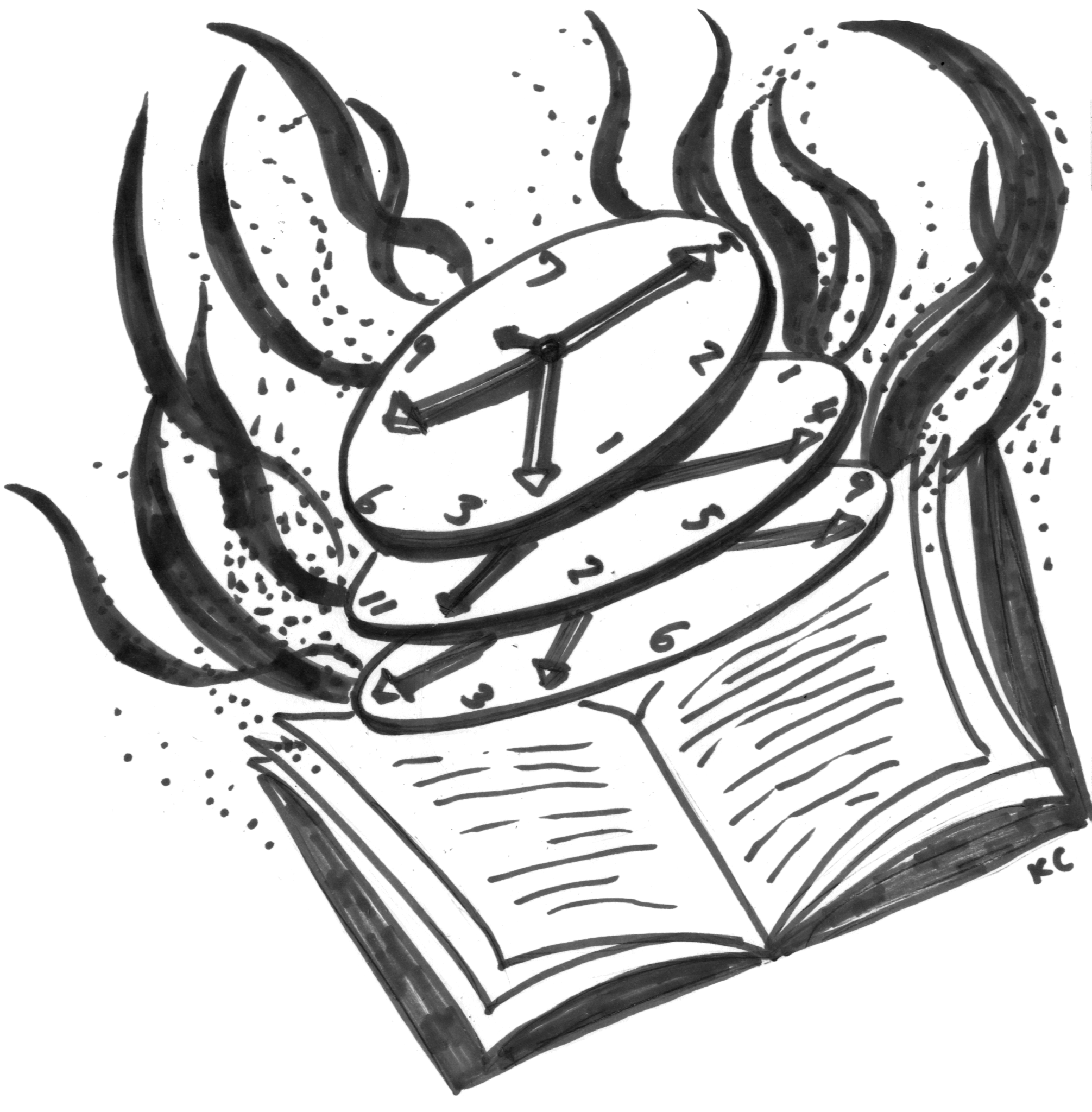
A Layman’s Review of
Alasdair Gray’s “Lanark”
I decided to review this book before I realized how unqualified I am to do so. Having encountered an excerpt from it in an English Literature practice exam during senior year of high school, I borrowed Alasdair Gray’s Lanark: A Life in Four Books from Sterling before summer break in the expectation of a meditative summer read on loss of love and the relationship between art and reality. And Lanark does fit that description. But little did I know that the 560-page whopper of a novel, elaborately illustrated by the author himself, would so transcend the boundaries of genre, fiction, typography — and my ability to describe it.
The novel begins with Book Three, in which Lanark navigates the dystopian urban landscape of Unthank, or Gray’s native Glasgow richly reimagined as a lightless purgatory. Seeking escape from the (aptly named) city’s decay, Lanark finds himself ensnared in the bureaucratic hell of the Institute, a hospital that cures various allegorical afflictions. Lanark, for instance, has a skin condition called “dragonhide” that is a physical manifestation of his inability to love.
This is followed by Books One and Two, which describe Lanark’s past life. This version of our protagonist is Duncan Thaw, who grows from a boy in Glasgow feeling everything too intensely to a struggling artist-madman grappling with the constraints of society. In stark contrast to his depiction of Lanark’s escapades, Gray’s language here is sparse and wistful as he shows us Thaw’s depth of emotional pain. In Book Four — the uproarious final movement of the symphony — Lanark embarks on a quest for daylight and winds up back in Unthank. Toward the end of this section is the book’s crowning moment: the Epilogue, in which Lanark meets a self-deprecating portrayal of the author himself while footnotes magnify the mind-bending metafiction.
The novel can feel, at times, like two very different stories hastily cut and glued into one, but in the oppressively hyper-ordered societies they live in, Lanark and his alter ego Thaw are looking for the same thing. It’s raw, pure, uncomplicated human connection, or as Lanark so poignantly puts it, “Someone to hold and whisper to affectionately, someone to hold him and speak lovingly back.” However, the novel’s universe is riddled with distorted relationships: Love is unreciprocated. People seek solace in lust but find only a crude facsimile of love. Everyone exploits everyone else. For example, Nan suffers from a fictional ailment that causes mouths to appear all over her body through which harem leader Sludden speaks and controls her — a visceral allegory for her exploitation. Either love is impossible, or it is essentially corrupt.
Indeed, the inscrutable hierarchy of the Institute (and its various related mechanisms under different names, such as “the council”) is designed to use the weak and incurably ill for “energy,” which is used as currency. Society exploits the individuals it comprises in order to sustain society. This is the essence of the novel’s most disturbing maxim: “Man is the pie which bakes and eats itself.” Over and over, the individual’s hopes and dreams are sacrificed to the hungry Leviathan of the collective: practical concerns regarding scheduling, money, and social expectation encroach on the purity of Thaw’s artistic vision, while Institute bureaucracy derails Lanark’s search for daylight.
Still, Gray does not tell us that all hope is lost. Lanark cuddles with an ill-humored Rima: “She pressed her freezing soles greedily to his shins, but her back was familiar and cosy and soon they grew warm and slept.” Even if every relationship entails mutual exploitation, it brings the simple comfort of being with another person. In a novel that exists in a perpetual state of flux — in which our protagonist is in constant motion, time speeds up and slows down, genre bounces between fantasy, realism, and science fiction, and the very distinction between fiction and reality is blurred — all Lanark craves is stasis. The stillness of being held.
I can’t say I fully understand this book — I continue to puzzle over whether its nightmarish universe fits neatly into allegory, or whether its intricacies are the product of Gray’s runaway imagination. But for all its sharp wit and bewildering scope, this book is most affecting when it captures the particular longing of looking for connection in a hostile world. “Lanark” is just a story about trying to be alive and not feel too bad about it. Or at least, I think so. I am going to have to read this book again.
Yuka Saji


No comments:
Post a Comment